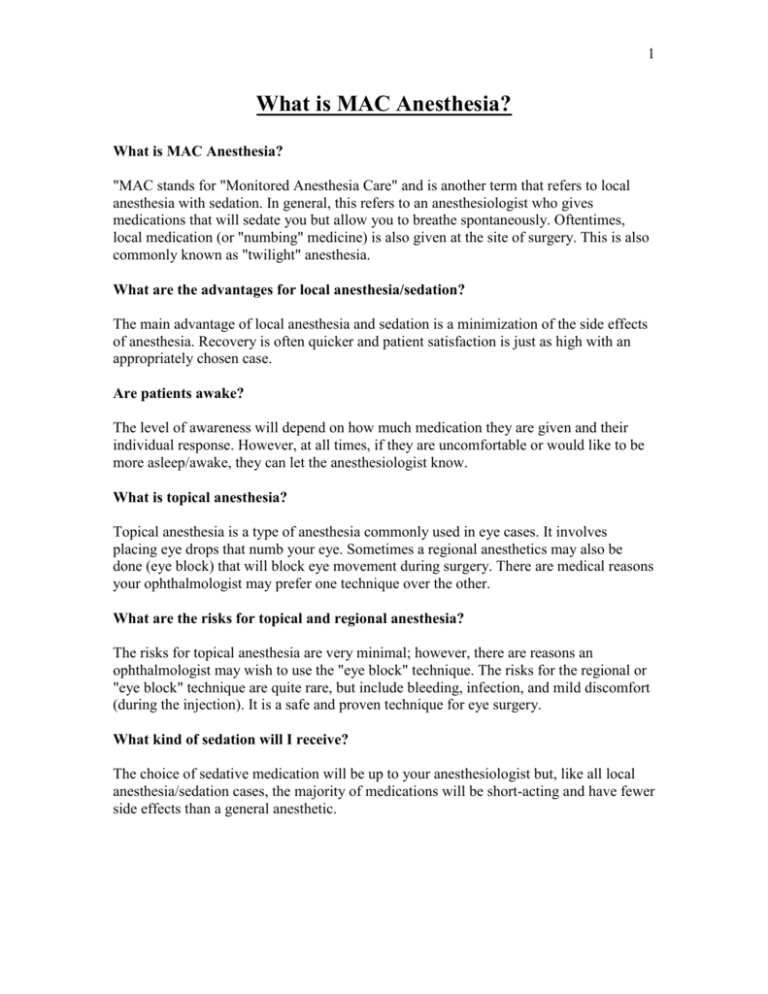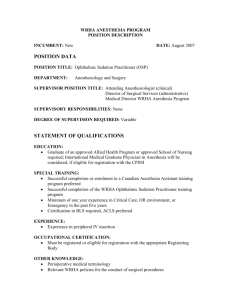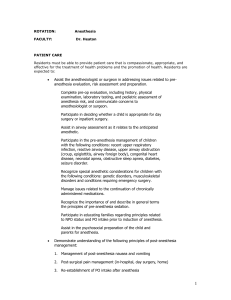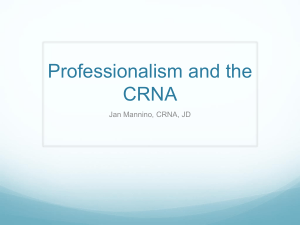What is MAC Anesthesia
advertisement

1 What is MAC Anesthesia? What is MAC Anesthesia? "MAC stands for "Monitored Anesthesia Care" and is another term that refers to local anesthesia with sedation. In general, this refers to an anesthesiologist who gives medications that will sedate you but allow you to breathe spontaneously. Oftentimes, local medication (or "numbing" medicine) is also given at the site of surgery. This is also commonly known as "twilight" anesthesia. What are the advantages for local anesthesia/sedation? The main advantage of local anesthesia and sedation is a minimization of the side effects of anesthesia. Recovery is often quicker and patient satisfaction is just as high with an appropriately chosen case. Are patients awake? The level of awareness will depend on how much medication they are given and their individual response. However, at all times, if they are uncomfortable or would like to be more asleep/awake, they can let the anesthesiologist know. What is topical anesthesia? Topical anesthesia is a type of anesthesia commonly used in eye cases. It involves placing eye drops that numb your eye. Sometimes a regional anesthetics may also be done (eye block) that will block eye movement during surgery. There are medical reasons your ophthalmologist may prefer one technique over the other. What are the risks for topical and regional anesthesia? The risks for topical anesthesia are very minimal; however, there are reasons an ophthalmologist may wish to use the "eye block" technique. The risks for the regional or "eye block" technique are quite rare, but include bleeding, infection, and mild discomfort (during the injection). It is a safe and proven technique for eye surgery. What kind of sedation will I receive? The choice of sedative medication will be up to your anesthesiologist but, like all local anesthesia/sedation cases, the majority of medications will be short-acting and have fewer side effects than a general anesthetic. 2 Trends MAC anesthesia is a poorly understood term. It stands for “Monitored Anesthesia Care”. It probably was more relevant years ago when most if not all surgeries were done in a hospital operating room. Surgeries under general anesthesia were done with the patient intubated, that is with a breathing tube placed into the trachea, most of the time using a laryngoscope, a piece of equipment used to look at the larynx. Patients were given muscle relaxants, more correctly, temporary paralyzing agents, and placed on a ventilator. If a patient was deemed to be too sick for a general anesthetic, and/or the procedure could be done with a combination of local anesthetic agent placed by the surgeon, along with some sedation supplied by the anesthesiologist, the anesthesia was called “MAC”. The addition of sedation was not necessary for a procedure to be done under MAC. For very sick patients, an anesthesiologist was simply required to be present to provide resuscitation if needed. Moving ahead to the present, it seems that our surgical and gastroenterology and podiatry colleagues often continue to define the anesthetic by how the airway is managed---which is incorrect. Due to advances in the anesthesia profession, such as the use of propofol as an intravenous anesthetic, many procedures can be done under what appears to be the MAC anesthesia of yesteryear, even though the procedures are being done under general anesthesia. For example, tummy tucks and breast augmentations with nothing more than a nasal cannula, can be done in a normally breathing patient, under general anesthesia. Anesthetics for colonoscopies and upper endoscopies, which are quite uncomfortable and sometimes painful procedures, are sometimes described to patients by gastroenterologists as “MAC” likely to avoid alarming patients who are under the misconception that a general anesthetic is where a patient is intubated and ventilated. Indeed, if a brain wave monitor were to be placed on one of their patients, the monitor would register readings in the general anesthetic range necessary for patients to remain immobile for their procedure. Similarly, a general anesthetic level of anesthesia given in the IV is required for a patient to tolerate the injection of local anesthetic into the foot during podiatry cases." 3 Source: Group Anesthesia. (2011). Patient guide: Sedation anesthesia. Retrieved October 10, 2011, from http://www.groupanesthesia.com/patientGuide/sedation.php








